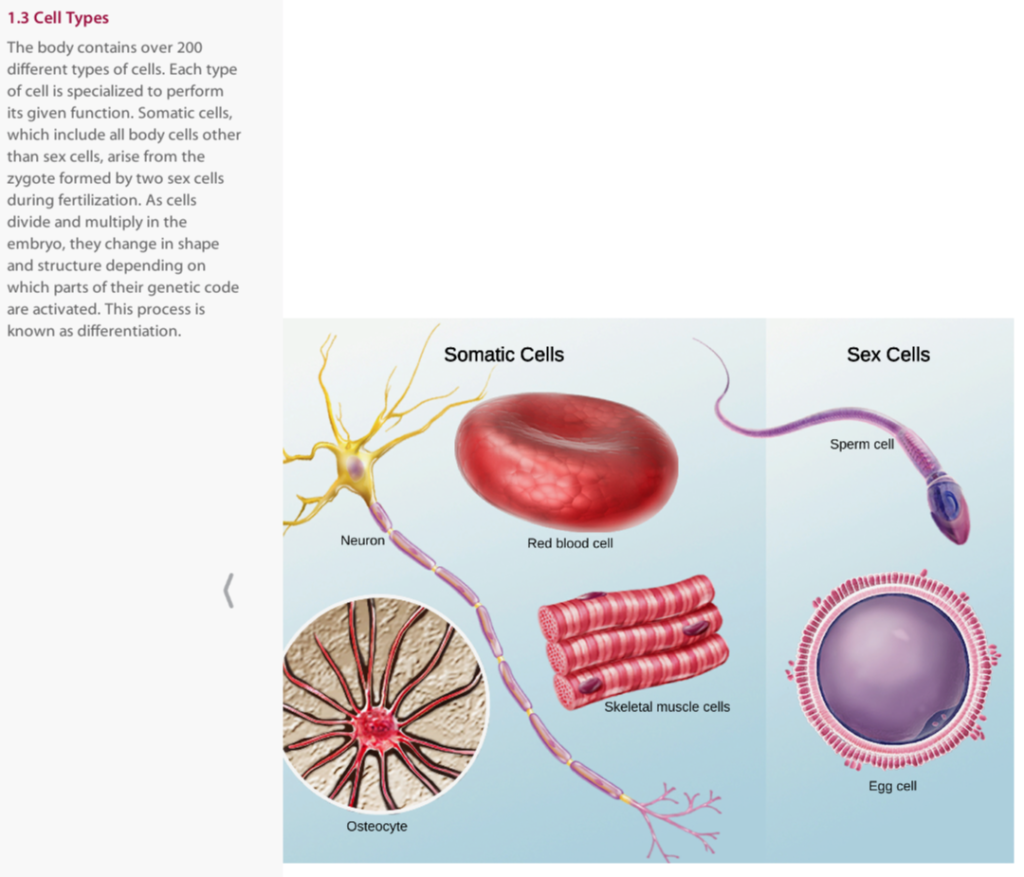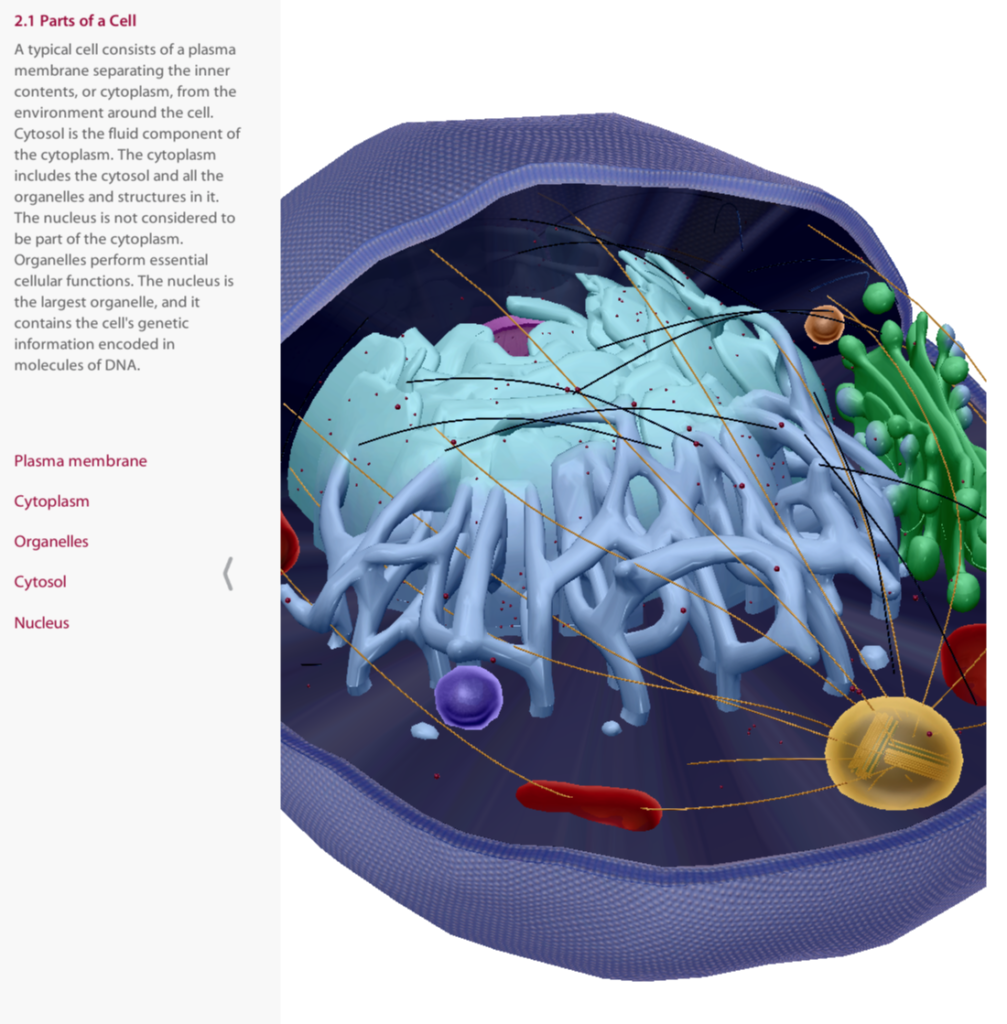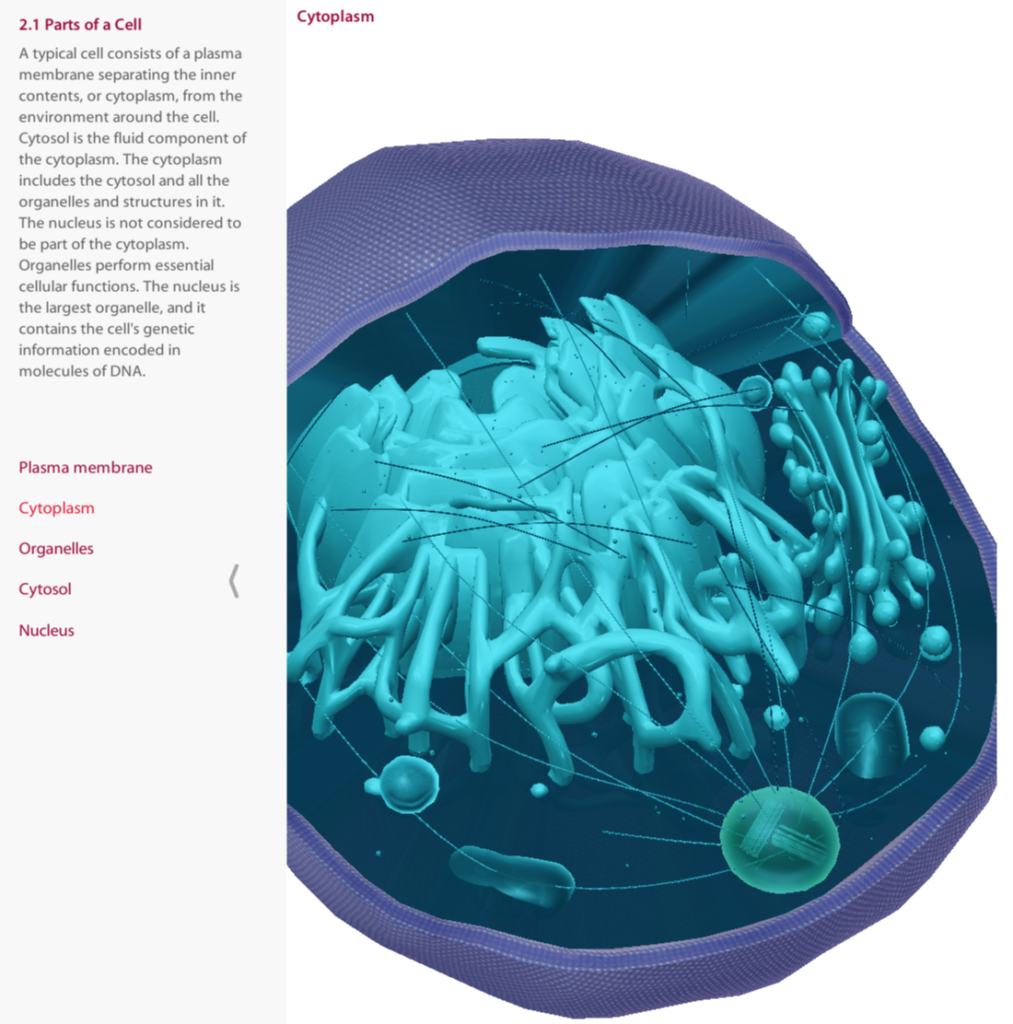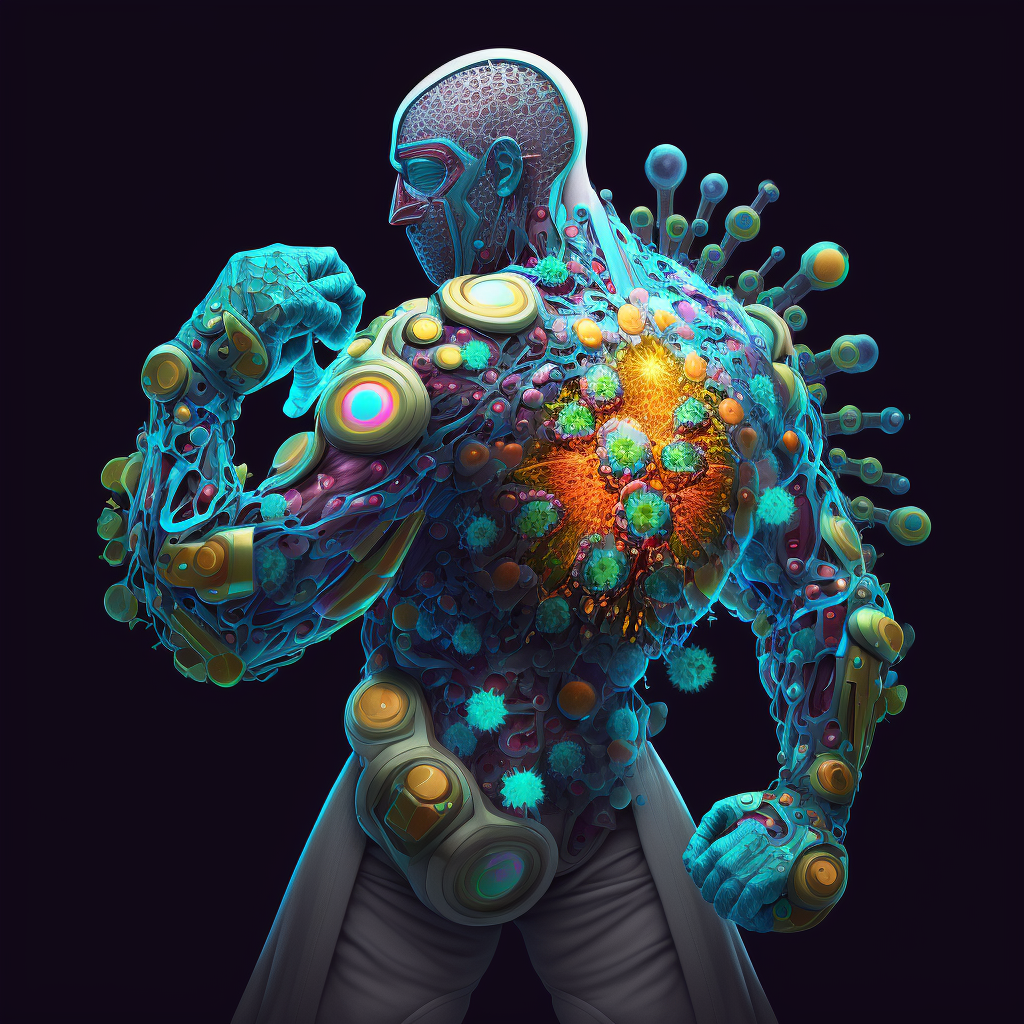ANE816
MY NOTES
Introduction: Cells and Tissue
Be able to recognize and identify the different types of cells from the module:

Somatic Cells: Neuron
Red Blood Cell
Osteocyte
Skeletal Muscle Cells
Sex Cells: Sperm Cell
Egg Cell
Cell Structure and Function
Be able to recognize in images (Location), and/or know the function of the following:
I. Parts of a Cell:

Plasma Membrane – outer “borders” of the cell
Cytoplasm – the “juice” of the cell outside the nucleus but inside membrane? …yes (see below)

Cytoplasm (cont.)- cellular region (everything inside membrane)

Cytosol – fluid containing dissolved solutes, inclusions, organelles
Nucleus
II. Plasma Membrane:
Phospholipid Bilayer (Hydrophilic portion vs Hydrophobic) –
Integral Protein
Pores & Channels
III. Organelles
Smooth Endoplasmic Reticulum
Rough Endoplasmic Reticulum
Lysosomes and Peroxisomes (For location just know they are in the cytoplasm. Know Function)
Golgi Complex
Nucleus
Mitochondria
Ribosomes
IV. Transcription (Know the structures involved and their function in transcription)
DNA
RNA Polymerase
Messenger RNA
Nuclear pore
V. Translation (Know the structures involved and their function in translation)
Transfer RNA
Codon (Start, Anticodon, Stop)
Ribosome
Cell Life Cycle
Be able to recognize in images (Location), and/or know the function of the following:
I. Cell Cycle
G0 Phase – Resting Phase
G1 Phase Growth – Organelle duplication, and protein synthesis
S Phase – DNA Replication (Replication)
4 nucleotides in DNA (Adenine, Thymine, Cytosine, Guanine)
G2 Phase – Growth and final preparation for division (Protein Synthesis)
Interphase
Mitosis (Prophase, Metaphase, Anaphase, & Telephase)
Cytokinesis
II. Mitosis
Know the structures (Microtubules, Percentriolar Material, & Centrosome, Chromosome, Chromatid, Centromere, & Nuclear Envelope)
Embryology
Be able to recognize in images (Location), and/or know the function of the following
I. Gametes to Zygote
Gamete definition
Zygote definition
II. Developing Embryo
Yolk Sac
Embryonic Cells
Amnion
III. Day 16 Embryo
Ectoderm (“Outer skin” forms skin, brain, and spinal cord)
Mesoderm (“Middle skin” forms muscle, bone, and connective tissue)
Endoderm (“Inner skin” forms Epithelial lining)
Notochord – forms the midline axis of the body dividing it between right and left
IV. Day 17 Embryo Neurolation
Neural Plate
V. Day 22 Embryo Neurolation
Neural Tube – Will become the central nervous system
Neural Crest – forms sensory neurons
LAB 1: A&P: Introduction: Cells and Tissue 1.1-1.3
A&P: Cell Structure and Function 2.1 – 2.23
A&P: Cell Life Cycle 3.1 – 3.6
Mitosis Cell PDF
A&P: Embryology 50.1, 50.3, 50.5, 50.6, 50.10, 50.12
Introduction: Cells and Tissue
Be able to recognize and identify the different types of cells from the module:
Somatic Cells: Neuron
Red Blood Cell
Osteocyte
Skeletal Muscle Cells
Sex Cells: Sperm Cell
Egg Cell
Cell Structure and Function
Be able to recognize in images (Location), and/or know the function of the following:
I. Parts of a Cell:
Plasma Membrane
Cytoplasm
Cytosol
Organelles
Nucleus
II. Plasma Membrane:
Phospholipid Bilayer (Hydrophilic portion vs Hydrophobic)
Integral Protein
Pores & Channels
III. Organelles
Smooth Endoplasmic Reticulum
Rough Endoplasmic Reticulum
Lysosomes and Peroxisomes (For location just know they are in the cytoplasm. Know Function)
Golgi Complex
Nucleus
Mitochondria
Ribosomes
IV. Transcription (Know the structures involved and their function in transcription)
DNA
RNA Polymerase
Messenger RNA
Nuclear pore
V. Translation (Know the structures involved and their function in translation)
Transfer RNA
Codon (Start, Anticodon, Stop)
Ribosome
Cell Life Cycle
Be able to recognize in images (Location), and/or know the function of the following:
I. Cell Cycle
G0 Phase – Resting Phase
G1 Phase Growth – Organelle duplication, and protein synthesis
S Phase – DNA Replication (Replication)
4 nucleotides in DNA (Adenine, Thymine, Cytosine, Guanine)
G2 Phase – Growth and final preparation for division (Protein Synthesis)
Interphase
Mitosis (Prophase, Metaphase, Anaphase, & Telephase)
Cytokinesis
II. Mitosis
Know the structures (Microtubules, Percentriolar Material, & Centrosome, Chromosome, Chromatid, Centromere, & Nuclear Envelope)
Embryology
Be able to recognize in images (Location), and/or know the function of the following
I. Gametes to Zygote
Gamete definition
Zygote definition
II. Developing Embryo
Yolk Sac
Embryonic Cells
Amnion
III. Day 16 Embryo
Ectoderm (“Outer skin” forms skin, brain, and spinal cord)
Mesoderm (“Middle skin” forms muscle, bone, and connective tissue)
Endoderm (“Inner skin” forms Epithelial lining)
Notochord – forms the midline axis of the body dividing it between right and left
IV. Day 17 Embryo Neurolation
Neural Plate
V. Day 22 Embryo Neurolation
Neural Tube – Will become the central nervous system
Neural Crest – forms sensory neurons
